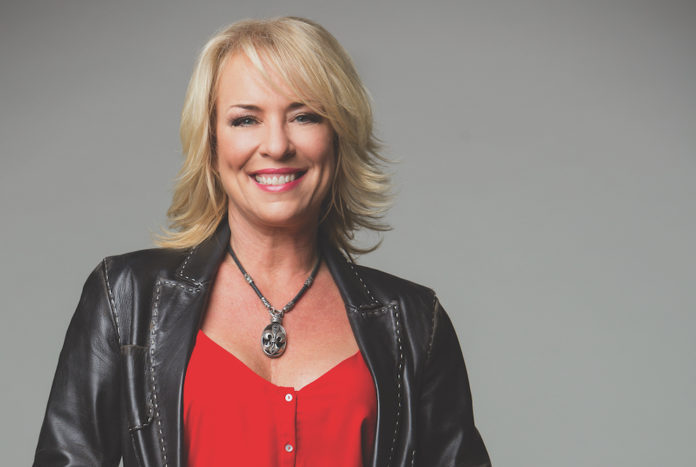Hippo Packaging’s Kary Radestock isn’t only about designing pretty packages. She and her team create consumer experiences.
With attention to detail, innovative packaging and branding technology, and forward-looking concepts, Hippo is a one-stop for cannabis company branding. Integrated services start with container design but also include promotional materials, website coding, and trade show displays.
The company even has in-house counsel to advise about compliance—an absolute necessity as regulations for compliant packaging, branding, and messaging are still evolving state by state in the U.S. and nationwide in Canada. Creativity, vision, consistent quality, and commitment are of paramount importance for cannabis companies as they establish profiles consumers will remember and embrace, Radestock said.
She said plenty more, too, in a wide-ranging discussion about the latest trends, the importance of an integrated strategy, child-resistant packaging, and much more.
What trends do you see coming?
The trends in cannabis packaging today are child-resistant and quick. There are a lot of child-resistant packages out there, but maybe not as many as we would like.
A lot of people are trying to take the guesswork out for the end consumer. They’re naming their products based on effects. We call it “effect-based naming,” which is quite popular. They’ve also been doing this for a long time: color-coding by strain, or “versioning.” It’s very popular. A lot of people like indica, sativa, and hybrids, [which are easily defined] with three different colors. Even versioning edibles by flavors and things like that.
One other thing that’s really trending in cannabis packaging today is different stock specialty papers—maybe uncoated papers with some sort of a texture, even a shimmery paper. Specialty stocks are also quite in fashion right now. When people touch a package, it needs to feel luxurious. Soft-touch coatings and laminations are important. Then it feels like velvet when you pick up the package.
Why are details like that so important?
Packaging is probably the only physical interaction a company has with their consumer, besides their product. Packaging has to do a lot of heavy lifting. It’s got to protect the product. It’s got to be tamper-evident and child-resistant. It’s got to have enough real estate to carry all the regulatory requirements. And it’s got to further the brand image. It should delight the consumer. The consumer should smile and be happy when they get [the product].
Our industry has a little bit of an image problem and a trust problem. We’ve got mainstream entering our industry. They don’t know a lot about cannabis. When they pick up a package, they are going to trust that brand immediately if [the brand has] got all [its] ducks in a row; if the package is produced professionally. That’s what they’re used to seeing in their everyday life. They’re going to need to see it in their cannabis packaging as well.
I think the cannabis consumer today is becoming mainstream. The biggest new users of cannabis are baby boomers and chardonnay moms. Baby boomers are a generation that was exposed to cannabis and then went away and had their careers. Now [they] are coming back to it.
Right now, the most successful cannabis brands are appealing to a mainstream audience in some way or another. They’re an adult audience for sure. If [companies are] smart about their approach, that’s what their goal should be.
What isn’t working in cannabis packaging right now?
“Old stoner” as a target demographic. There was a lot of that stoner branding. The darks and the purples. A lot of caricatures—the type of artwork that appealed to that stoner demographic. That’s what people are moving away from. We don’t even want to call it “weed” anymore. We don’t want to call it “ganja.” We want to call it “cannabis.” We want to change the vernacular because we are moving as more of a mainstream opportunity. We’re changing the vernacular to improve the image of the industry.

Is it tough to keep up with regulations for packaging and branding in different states—and now in Canada?
Right now, the industry is in its infancy. [Governments] have over-regulated in terms of packaging requirements, and it’s changing. Right now, we’re in a state of flux. [California’s proposed final] regulations just came out. Now [regulators are] putting the burden of child-resistant packaging on the actual product package rather than the exit bag. They’re giving the community a year to get that together. This is the proposed permanent regulation for California, which is pretty big. As California goes, so will the rest of the country, more than likely.
Eventually, [governments] will find the packaging regulations that make the most sense for everybody. It’s going to take a little back and forth. Colorado went back and forth several times. We’ve appealed to [California’s] regulators, saying “Learn from Colorado. Don’t make those mistakes. This packaging back-and-forth does cost millions of dollars and it costs a lot of people’s businesses.”
The regulators really need to be conscious of the decisions they’re making and the impact those decisions have on this industry. We’ve been working with them to try to get there. We feel it’s moving in the right direction.
What elements of branding do entrepreneurs and businesses sometimes overlook?
Great packaging starts with great graphic design, and a lot of people forget that part. You’re not going to have beautiful packaging without it. I tell people, “When developing your brand, hire the best graphic designer you can afford, because it is worth it.”
I suppose another thing I would tell people about developing a brand: Leave enough time to produce it right. Really, packaging—changing your packaging—is about a nine-month process. Nobody really leaves that time. We have so many people who call up and they want a logo design, they want packaging design, and they want to be in retail in sixty days. There’s just no way that’s going to happen. Packaging itself takes six weeks, and that’s domestic. If we go overseas, double that lead time.
So, I have to disappoint people a lot, because they’re very enthusiastic and ready to go. But packaging takes time. And great packaging takes a lot of back-and-forth—with the client and with the factories. To allow the proper amount of time just helps everyone not stress out during the production process.
What was one of your favorite projects?
Utopia. Because they were our first, I feel like they’re my firstborn. We developed their brand identity, their logo. I just love to see how that brand has developed layers over the years. We started with just a logo, and then we did an ad showing the new logo. Then we launched flexible packaging and a point-of-purchase display. Then labels for their flower and concentrate jars, and eventually they were able to add overwrap boxes for their flower and their concentrates, which just upped the brand’s image. It really set them apart as a premium brand. And they used some really beautiful papers. When you can use a specialty stock like that, it really sets the brand apart as a premium brand.
We’ve been working with [Utopia] for two and a half years, and we’ve just gotten to grow on so many levels with them.
What do you advise for companies that are just starting?
We recommend you start small and grow. Packaging is expensive, and each product is going to be expensive. But all companies, big or small, need basically the same thing.
Job one is going to be your website, your business cards, and your packaging. That’s job one. And then, if you’ve got more budget, then hopefully you can do a table drape and a retractable banner, so you can get out and do shows, demo days, and things like that in retail stores. All the events that are going on—festivals and things. They just need to grow from there.
You need an online presence. A lot of businesses just have an Instagram set up. “I’ve got an Instagram and a retractable banner”—that’s where a lot of people start. But to be honest with you, your website is your digital online presence and very, very important. So, I would say to really focus on those things to start.
Every event you go to, collect email addresses because you’re going to want to have a direct conversation with your customers. And you’ll want them to know about product launches and that type of thing. A lot of businesses don’t do that. They don’t collect anything, and [contact information is] really critical for success.
What are some innovative branding tools for companies with big budgets?
Augmented reality—that’s a new technology. Not that new; I learned about it over ten years ago, but it wasn’t widely used.
There is a wine brand called 19 Crimes out of Australia. They put this technology front and center as a real brand-enhancer. They produced several different bottles of wine with different labels on each one. The labels linked to augmented reality profiles of convicts and what their crimes were; they were playing off how the colony of Australia was founded by Europe sending convicts there. So, each bottle had a little bit of a story to it, and you’d have to collect all of the bottles. You’d put your phone against it [to access a link code], and then that face would come alive and start talking to you, right on your phone, telling you the story.
Mainstream’s using [the technology], and it’s a great thing for cannabis companies to start thinking about, especially the ones that have a little more budget, that are a little bigger. It’s a great way to tell the brand story, to engage with the consumer, to bring them in, and to create brand ambassadors out of your consumers. It’s a great technology.
You could do a drone flyover of the farm, you can talk about the process, you can meet the founders, or if the brand was created using Aunt Betty’s recipe and she had cancer and this helped cure her, then we have interviews with her and see her. Whatever it is.
The point is, good branding means you really connect with the consumer, and you have to do it on every single touchpoint that you can. To have your packaging be able to come alive and really tell a brand’s story is pretty exciting. I think we’re going to see [augmented reality] being used over the next few years in cannabis.
Branding and packaging really are visual story-telling, aren’t they?
In its most simple form, your brand is your reputation. It’s how people think about you. It’s what they say about you when you’re not there, and everything you do is part of building that brand. Everything you say. It takes years to build a brand. It can be destroyed in an instant by making a mistake, so you have to be really careful with everything you do as you’re building a brand. It’s your reputation.












